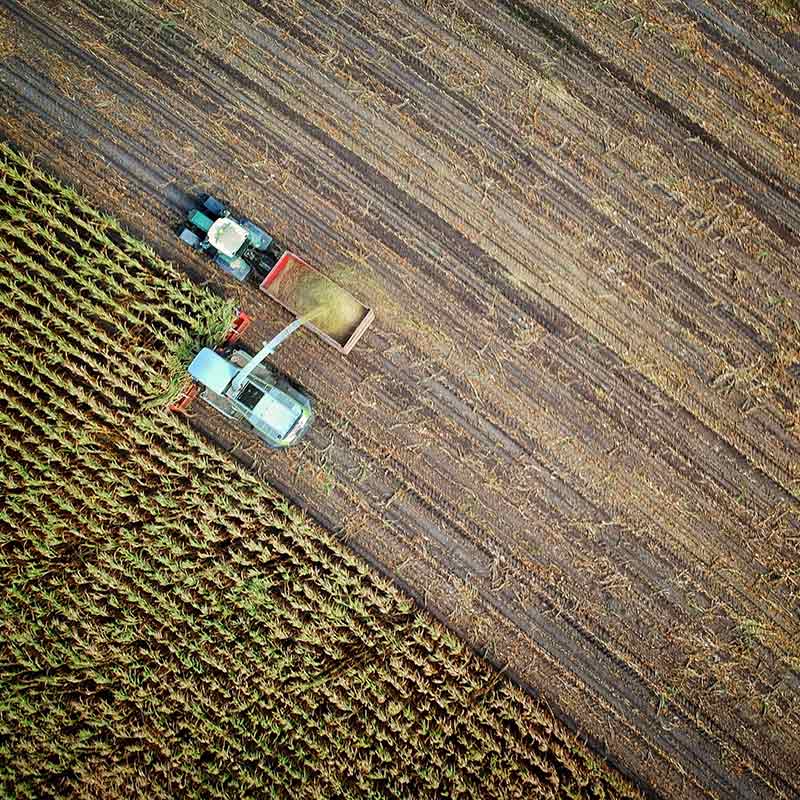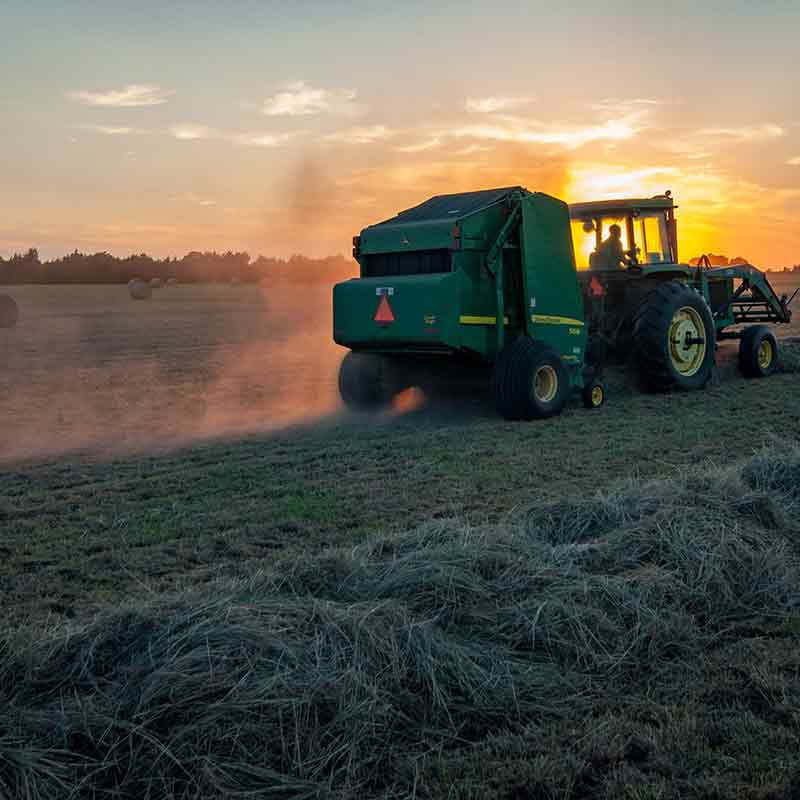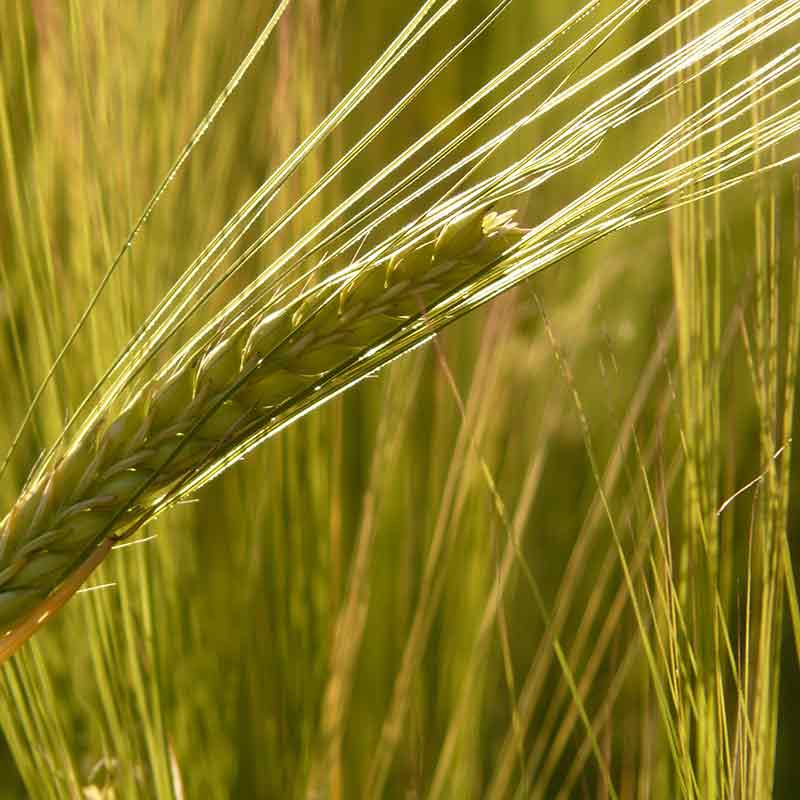Sustainable agriculture 101: get informed - problem & solutions
About this step
In this section, we’ll help you get up to speed on the impacts and opportunities within animal agriculture, crop production, product design, packaging, measuring and reporting, key stakeholders and the policy environment. Because of its incredible importance, we have a separate pillar focused entirely on thriving forests, which is a part of sustainable agriculture. You can check that out here.
What is the problem?
Initiatives to feed our quickly expanding world are taking hold but unfortunately many food companies and producers are only thinking about achieving this goal at a low cost — and not with a smaller environmental footprint. We see this exemplified within monocultures — farms that plant only one or two crops year-after-year on the same soils. While there is extreme efficiency within these systems, it can be at the cost of future agricultural stability. This lack of crop diversity can result in poor soil health, which can then affect the productivity of future crops.
On a very different front, the communication connection from farm to table has been challenging. Farmers are often far removed from consumers or to the stores that are selling products that contain their crops. Consumers have a hard time understanding production realities when distanced from the farmers and ranchers who stock their grocery carts. This disconnect leads to misunderstanding on both sides — of the true desires of consumers and the real intentions of farmers when it comes to environmental sustainability.
While the supply chain is interconnected, each piece of this supply chain also has its own environmental impacts and motivation to improve. Protein production itself leads to 42 percent of total U.S. agriculture emissions. Sub-optimal fertilizer application and soil management leads to most of the remaining agricultural emissions. Although fertilizer is a key ingredient for increasing crop yields, in any given year only 40 percent of nutrients applied are taken up by crops. The unused fertilizer, whether synthetic or organic, is lost to the environment, causing pollution to air and water. Historically, over-application has been used as a method of risk-mitigation on a farm as a way to protect against yield losses. However, now we are moving into an era of precision agriculture, with real-time weather and crop monitoring. But, getting better on the technological front does not necessarily make it easier for growers.
It’s important for everyone involved in agricultural supply chains — from farmers, landowners, agricultural retailers, aggregators, processors and consumers — to be engaged in the solution.

Why should my company care?
Consumers value products that are produced sustainably. For example, a Nielsen study found that while overall coffee sales growth fell one percent between March 2017 and March 2018, coffee products with environmental and fair trade claims experienced double-digit dollar sales growth for the same period. These claims included recyclable packaging, less plastic waste, ethical sourcing and eco-friendly labeling.
Companies that have stepped up to take responsibility for their share of the climate problem are also seeing benefits in the form of cost savings, supply chain risk reduction, public relations benefits and new product innovation. For example, a study of 190 Fortune 500 companies in 2016 showed nearly $3.7 billion in savings as a result of emission-reducing projects.
However, in order to capitalize on this opportunity, producing food without depleting our soil and quality water resources should be top of mind for every company that touches this supply chain. Perhaps the most important reason is risk management. No company, and especially a company with global supply chains, is immune to the effects and devastation of climate change.
What are the business opportunities?
Many companies — including Walmart, Smithfield Foods, and Campbell Soup Company — have already begun to understand the importance of incorporating agriculture into their corporate sustainability plans. While there is still much work to be done, companies that take the lead in establishing strategies for mitigating agricultural impacts from their supply chains stand to benefit in many ways, including:
- Reducing costs and minimizing risks from climate change induced supply chain disruptions in supply.
- Anticipating consumer demands and regulatory changes related to agriculture, like water use, rather than reacting to them.
- Achieving a competitive advantage by building trust with consumers that want more sustainable food.
- Building a positive reputation among consumers, investors and employees as a company that is forward-thinking, innovative and cares about its customers.
- Increasing food safety and risk of recalls by decreasing the risk of pathogens from unclean water.
- Building trust with producers and suppliers in a way that will help guarantee high-quality, consistent, safe production.

Are there solutions based on my role in the supply chain?
Agriculture has the potential to contribute significantly to bringing greenhouse gas emissions within acceptable global limits. When the incentives are aligned, our environment will benefit, as well as our local economies and business bottom lines. Find out where you fall in the agricultural supply chain and what opportunities are available to you.
If you work for a company that touches the agricultural supply chain, it’s necessary to approach sustainability in a holistic way, as many pieces are connected like corn and protein production. If you want to ensure important crops in your products will be available year after year, you need to ensure the farmers you source from are using scientifically sound and economically viable practices to improve fertilizer efficiency, soil health and water quality. Companies should be investigating and implementing incentives to address the motivations and interests of supply chain players. Whether these incentives are financial, political or social depends on the change a company wants to make and may change over time.
Grocery, retail or food service companies.
Your customers want to know what’s in their food. You’re in the best position to find answers for them, not to mention establish leadership in advancing sustainable agriculture. As a critical lever in the supply chain between consumers, suppliers and producers, you can help facilitate communications between different parts of the chain.
Consumer products company.
You formulate the “secret sauce” that makes your product taste like it does, and you choose who to buy those ingredients from. That makes you a powerful lever: You can tell suppliers you want products produced or grown more sustainability, or you’ll take your business elsewhere. Working together with ingredient suppliers, you can tackle the issue of transparency and encourage innovative new developments that benefit the entire supply chain. For your business, that means more resiliency and less risk.
How can I take action?
Be transparent.
Talk to your stakeholders (farmers, suppliers and consumers) about your goals for sustainable agriculture and the progress you make. Commit to increasing transparency up and down the supply chain by setting strong goals for sourcing sustainable products using our Build a sustainability plan 101 guide.
Engage.
Engage every point of your supply chain on greenhouse gases and water quality. Collaborate with an environmental NGO, such as EDF, World Wildlife Fund, The Nature Conservancy, The Sustainability Consortium or World Resources Institute. We all have different specialties and skills, but we all exist to help you succeed.
Collaborate.
Join Walmart’s Project Gigaton, the Ceres/WWF AgWater Challenge or other industry collaborations. Learn about sustainable agriculture initiatives such as Field to Market and the Midwest Row Crop Collaborative. Work with your suppliers; in the past year, nearly 20 major suppliers, representing about 30 percent of food and beverage sales in North America, have looked across their supply chains and developed collaborative plans to reduce fertilizer runoff and improve soil health.
Continue with: Sustainable agriculture 101: get informed – strategies & resources
